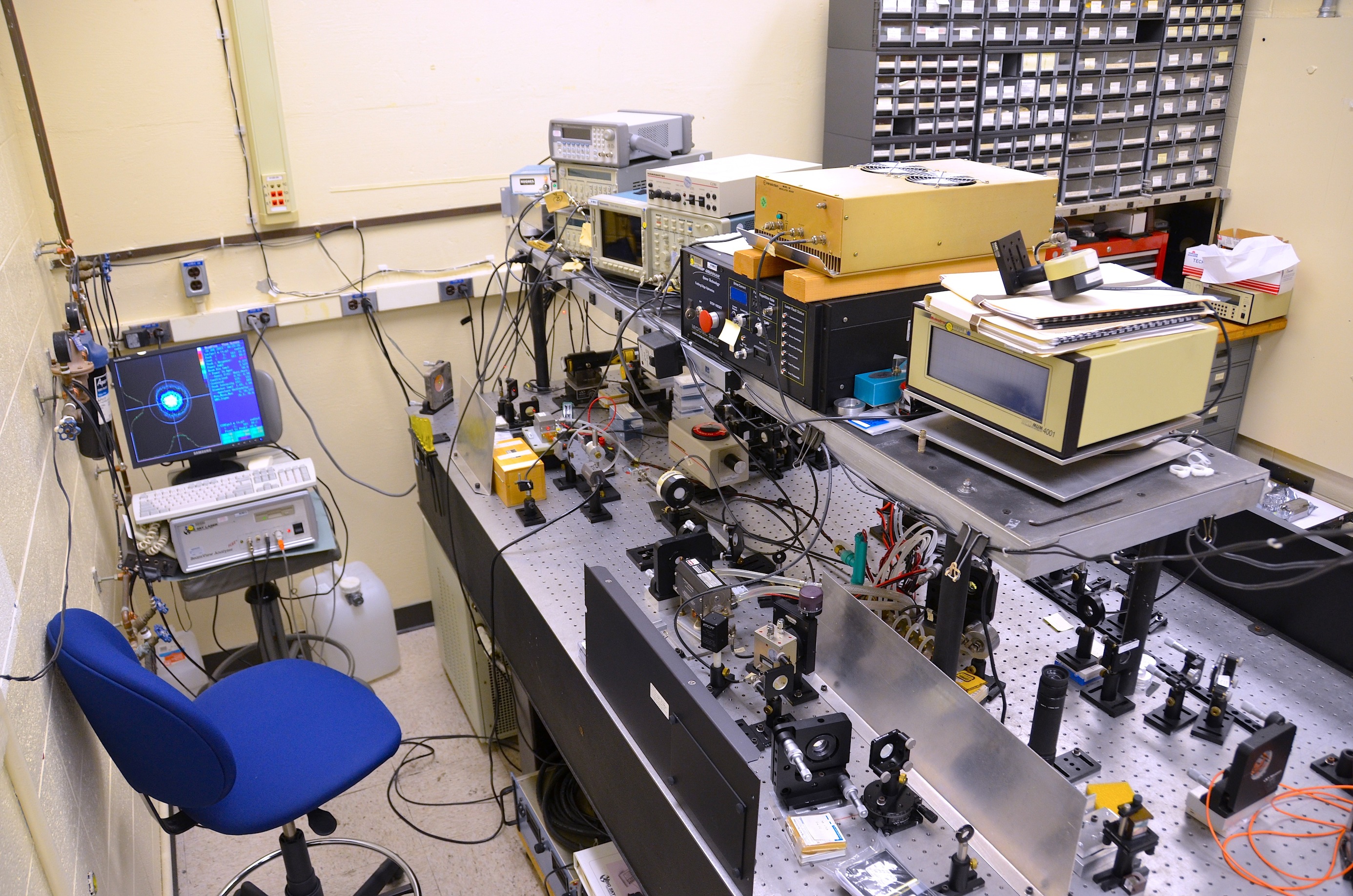 NASA Langley has many fully instrumented laser laboratories in which a laser system can be engineered and evaluated. Typically, each
NASA Langley has many fully instrumented laser laboratories in which a laser system can be engineered and evaluated. Typically, each
laboratory has 2 or 3 optical tables.Each laboratory has a plethora of optics, and optical mounts. These laboratories have a variety of equipment for laser operation and evaluation, including: power supplies, pulsed laser diode drivers, refrigerated baths, temperature controllers, power and energy meters, fast detectors, and fast digital oscilloscopes, Wavelengths are typically measured using monochromators under computer control or wavemeters, which can measure the wavelength to 6 figure accuracy.
Beam quality and profiles are measured using a Si or InGaAs camera and interpreted with beam profiling software.
NASA Langley Research Center has a lengthy history of successfully developing laser materials and laser systems. We have worked with a wide variety of solid-state Lanthanide doped materials and transition metal doped materials, solid-state diode systems, and also have a capability in the demonstration and refinement of fiber laser systems. We have demonstrated narrow frequency systems, long and ultra fast short pulse systems, mode-locked systems, tunable injection seeded lasers, and many other technologies available in laser development. The following is an abbreviated list of laser technologies developed at Langley:
- Ho lasers
- Ho:Tm:YLF, oscillator and amplifier, 600 mJ
- Ho:Tm:LuLF
- Tm lasers
- Tm:LuAG
- Tm:silica fiber, ~10 W continuous, TEM00 mode
- Tm:ZBLAN fiber
- Tm germanate fiber
- Tm:YAIO3
- Er lasers
- Er:YAG
- Er:LuAG
- Er silica fiber
- Nd lasers
- Nd:YAG, Nd:YSAG, and Nd:GYAG
- Nd:YLF and Nd:LuLF
- Nd:BEL
- Nd:LMA
- Ce lasers
- Ce:YLF and CE:KYF4
- Ce:LiCaAIF6 and CeLiSrAIF6
- Transition metal lasers
- Ti:Al2O3
- Co:MgF2
- Cr:BeAl2O4 and Cr:LiSAF
- Laser performance refine laser performance
- TEM00 mode performance, about 1.3 diffraction limit
- injection seeding, single mode, transform limit
- double pulse
- UV laser system at 300 nm and 315 nm
- 4 joule 1064nm laser, 2 joule 532nm, multiple systems
- Ti:Sapphire systems, pulsed and CW
- Visible OPO and mixing systems
- Picosecond Ti:Sapphire capability
- Engineered wavelength tuned materials
- compositional tuning of Nd materials to 945nm region
- wavelength prediction based on Quantum Mechanical model
- High Power Solid-State Laser Diode testing facility
- Non-linear Wavelength tuning across the Mid-Infrared
- PPLN tuning from 1400nm to 4200nm
- ZGP operation from 3000nm to ~12000nm
- AgGaSe2 operation in the mid-infrared
- Detector evaluation capabilities